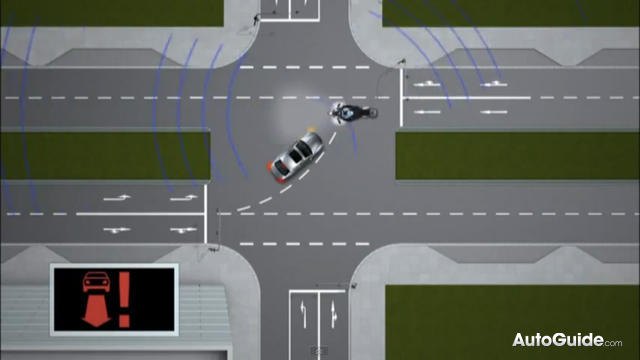- Acura
- Alfa Romeo
- Aston Martin
- Audi
- Bentley
- BMW
- Buick
- Cadillac
- Chevrolet
- Chrysler
- Dodge
- Ferrari
- Fiat
- Ford
- Genesis
- GMC
- Honda
- Hyundai
- Infiniti
- Jaguar
- Jeep
- Kia
- Lamborghini
- Land Rover
- Lexus
- Lincoln
- Lotus
- Lucid
- Maserati
- Maybach
- Mazda
- McLaren
- Mercedes-Benz
- MINI
- Mitsubishi
- Nissan
- Pagani
- Porsche
- Ram
- Rivian
- Rolls-Royce
- SMART
- Subaru
- Tesla
- Toyota
- Volkswagen
- Volvo
#car-to-x
BMW Testing Car-To-X Communication To Help Make Driving Safer [videos]
As part of a national project called SIM-TD, BMW is working on technological advancements to help make driving safer through its next-generation Car-to-X Communication technology. BMW recently conducted several field tests, showing what the technology is capable of, from activating warning lights when a vehicle makes a left turn, to alerting drivers on upcoming traffic lights, to warning them when there are local hazards on the road.
Currently BMW is showing off five of Car-to-X’s features: left-turn assistant, intersection assistant, traffic light assistant, emergency vehicle warning and local hazard warning. The left-turn assistant utilizes vehicle-mounted cameras and GPS to determine when a driver is about to make a left turn. A system of warning lights activate to make sure everything is nice and safe. The intersection assistant is similar, using a system of visual warnings to notify a driver when a vehicle is in an intersection.
The traffic light assistant is pretty clever, working with the traffic infrastructure to inform drivers about upcoming traffic lights and their status. The last two warnings, emergency vehicle and local hazard, are exactly what they sound like, informing drivers ahead of time if an emergency vehicle is approaching or there are any upcoming road hazards.
It will be interesting to see how and if BMW will implement any of these technologies into its future models.
Check out multiple videos highlighting each of the Car-to-X features after the break.
[Source: Cartech Blog]





![BMW Testing Car-To-X Communication To Help Make Driving Safer [videos]](https://cdn-fastly.autoguide.com/media/2023/06/29/13452952/bmw-testing-car-to-x-communication-to-help-make-driving-safer-videos.jpg?size=720x845&nocrop=1)









